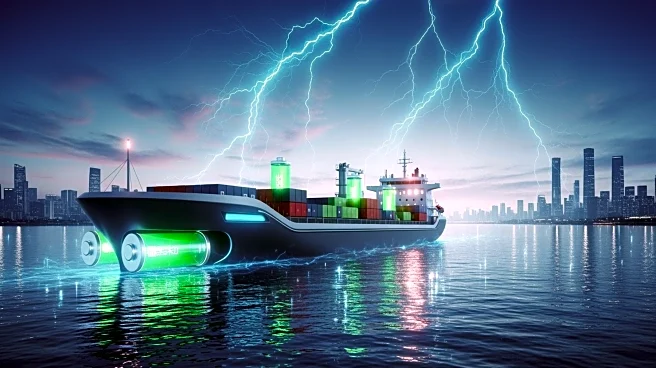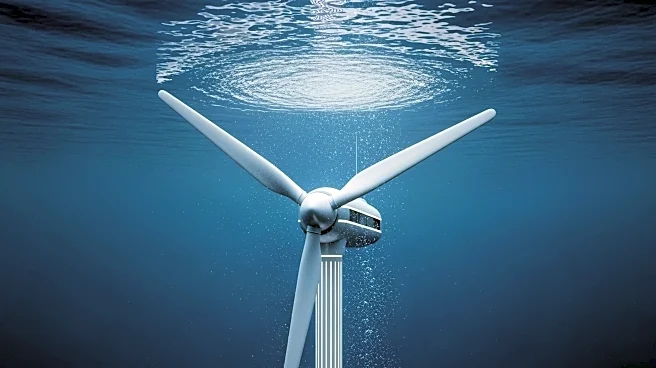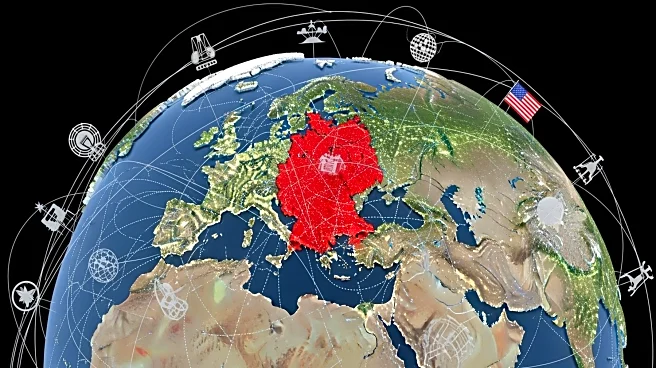What's Happening?
The Yangtze River is undergoing a significant transformation as it becomes the world's largest electrified trade corridor. This development is marked by the launch of the Gezhouba, a 13,000-ton all-electric bulk carrier in Yichang. The vessel is equipped
with 24 MWh of containerized lithium battery modules, capable of moving cargo approximately 500 km on a single charge. This electrification effort is part of a broader initiative to replace diesel-powered port equipment and vessels with electric systems. The process involves integrating high-capacity chargers and energy management systems into port operations, allowing for the electrification of cranes, trucks, and eventually, inland and short-sea vessels. The Yangtze River's electrification is supported by ultra-high-voltage direct current (UHVDC) transmission lines that deliver renewable power from western China to the industrial east, creating a new energy geography along the river.
Why It's Important?
The electrification of the Yangtze River corridor represents a significant shift in maritime energy use, with implications for global shipping and trade. By transitioning to electric power, the corridor reduces reliance on fossil fuels, contributing to environmental sustainability and reducing emissions. This shift also positions the Yangtze as a model for other major trade routes worldwide, such as the Rhine in Europe and the Mississippi in North America. The move towards electrification is expected to drive innovation in battery technology and infrastructure, potentially lowering costs and increasing efficiency in the shipping industry. As ports evolve into energy hubs, they will play a crucial role in balancing regional power grids, further integrating renewable energy into the global economy.
What's Next?
The continued development of the Yangtze River's electrification will require coordination among shipbuilders, utilities, and port authorities to standardize battery modules and expand the supply chain for lithium cells and power electronics. Smaller river ports will need grid reinforcements and on-site storage to manage charging demands. As the infrastructure grows, the electrification of inland and short-sea shipping is expected to accelerate, with deep-sea vessels transitioning more slowly through hybrid designs. The success of the Yangtze corridor could influence similar initiatives in other regions, promoting a global shift towards sustainable maritime transport.
Beyond the Headlines
The electrification of the Yangtze River corridor highlights the potential for ports to become integral components of a continental electrical system. As ports transition into energy hubs, they will not only facilitate trade but also contribute to regional energy stability by distributing renewable electricity. This development underscores the importance of infrastructure reuse and the role of ports in the broader energy transition. The shift away from fossil fuels in shipping aligns with global trends towards decarbonization and sustainable development, setting a precedent for future innovations in the maritime industry.














